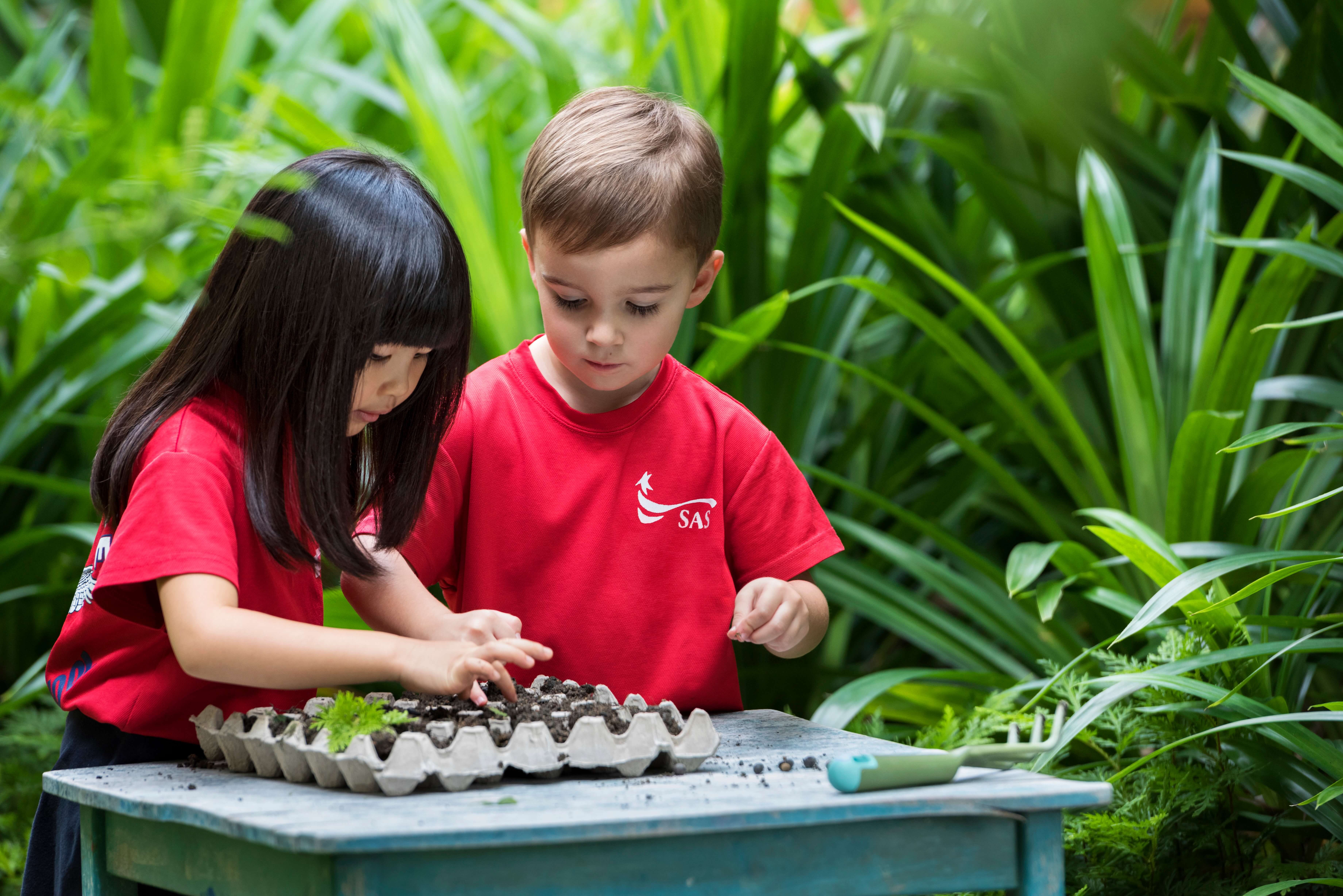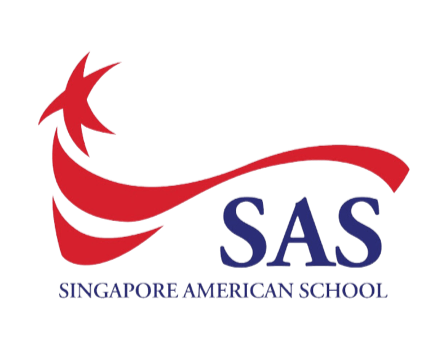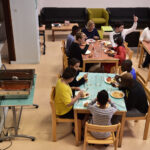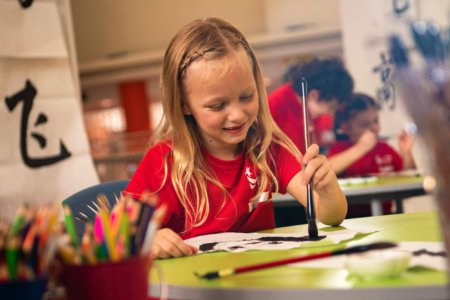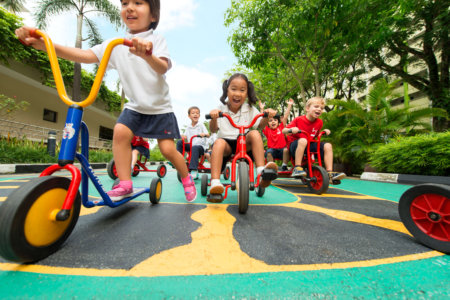“I want to be a police officer because I want to catch bad guys.”
“I want to make a robot who can clean up for me all by itself!”
“I want to be a doctor because I like to help people.”
These are just a sampling of the intelligent replies that the children — just aged three and four years old — at Singapore American School’s Early Learning Centre gave for the question “What do you want to be when you grow up?”
Hardly surprising when the early learning center has been actively inspired by the Reggio Emilia approach — a student-focused curriculum founded by Italian psychologist Loris Malaguzzi. He famously penned the “100 Languages” poem about the many ways a child can think, play and speak.
The early learning center’s daily application of the Reggio Emilia-inspired philosophy — divided into five areas highlighted below — focuses on the student within a supportive learning environment.
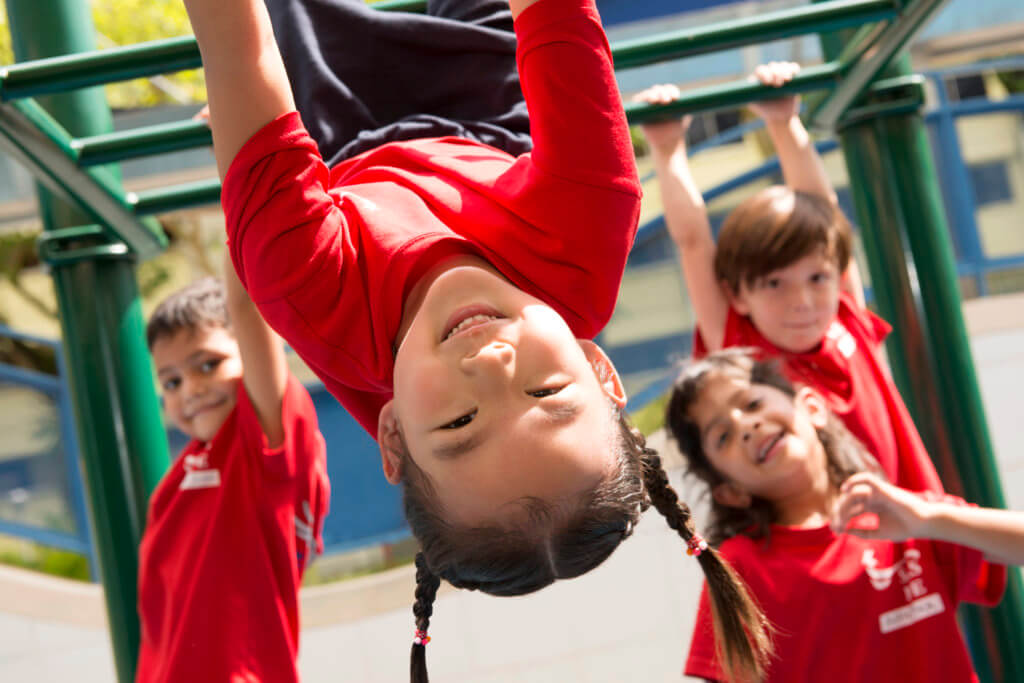
Source: Singapore American School Early Learning Centre
Image of the child
Children have a healthy curiosity to know how and why things work so they will find ways to get their answers. They also learn from interacting with each other which is why they work better in small groups — just like how a community works and learn together — and should be considered active learning collaborators.
Environment as the third teacher
As a living and welcoming space where everyone forms a relationship with one another, the learning environment should allow easy collaboration, exploration and communication among children.
Teacher as researcher
Teachers observe from the children how and why they think, and what interests them. They then guide the children with questions designed to make them learn and discover new things.
The 100 languages of children
Children think and express their thoughts, creativity and understanding in 100 different languages and ways. Examples of expressions can be painting, dancing or even questioning.
Relationships
Through relationships, children learn from their friends, teachers, environment and the parent community. In fact, Malaguzzi believes that parents — with their invaluable skills and ideas — are the original teachers, and the educators play a supporting role in each child’s learning journey.
SAS early learning center: Where your child’s happy and safe learning experience is top priority
The SAS early learning center strives to let children learn in different ways throughout the day. From 8.00am to 1.30pm, Chinese class, and a moove and groove class, coupled with morning and lunch breaks, allow ample flexibility for preschool and pre-kindergarten students to learn with joy, wonder and interest.
Preschoolers are encouraged to have home-packed lunches after their own morning snacks; pre-kindergarteners can have pre-purchased set menu lunches from SAS on top of their own morning snack.
Parents wondering about the class size will be happy to know one teacher and one instructional aide will oversee 16 children; the size is doubled for the learning communities.
The SAS early learning center also provides support services like a speech and language specialist, counsellors and a school psychologist. For children whose first language is not English, English for Speakers of Other Languages (ESOL) is available as full immersion within the regular classroom.

Source: Singapore American School Early Learning Centre
How to prepare your child for the first day of school
Understandably, children and parents may feel anxious about the first day of school. The SAS early learning center recommends eight strategies:
- Read books that help them reduce their first-day anxiety about school
- Teach them to move around and help themselves independently like letting them pack their own bags.
- Visit the preschool before the actual day if possible — that will help children feel more comfortable around their new place.
- Pretend-play to mimic preschool routines — you can act as either a teacher, parent or child to help them see that school will be a fun experience.
- Establish a routine — explain to your child and share about the new daily schedule beforehand so that they can adjust better.
- Make back-to-school traditions together — it can be buying special school supplies or making their preferred snacks and lunches together with them.
- Create a safe supportive space for your child to share how they feel about school.
- Talk about going to preschool positively and cheerfully at least three weeks beforehand – this will give them enough time to process this big life event.
Encouraging your child to develop healthy habits early can also help them confidently learn more and move about the world around them:
- Keep active with physical play for healthy development.
- Stay nourished; if they are fussy eaters, let them select colourful food options like vegetables, dips and sauces.
- Reduce on-screen time to one hour daily.
- Teach them about proper hand washing before and after meals, toilet visits and outdoor activities.
- Stay hydrated with enough water and avoid sugar-enriched drinks.
- Share with them about mindfulness exercises to manage stress.
- Let them have 11 to 13 hours of sleep including day naps.
- Read together as a family daily.
With all these tips and the Reggio Emilia-inspired approach, your child will look forward to learning and making new life memories at the Singapore American School early learning center in no time. To learn more about the early years program at SAS, you can join the virtual event on January 25th. All you need to do is register at the following link: https://www.sas.edu.sg/admissions/tours/early-years
Follow Singapore American School on Facebook, Twitter, YouTube and Instagram

